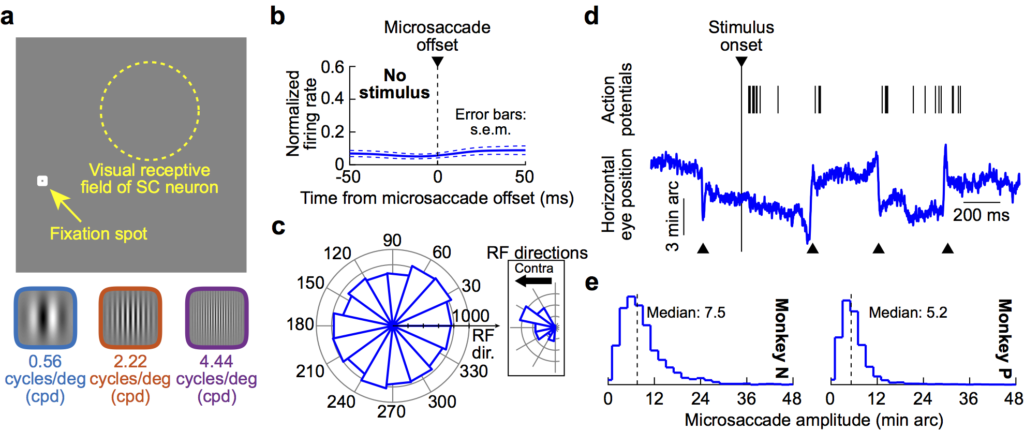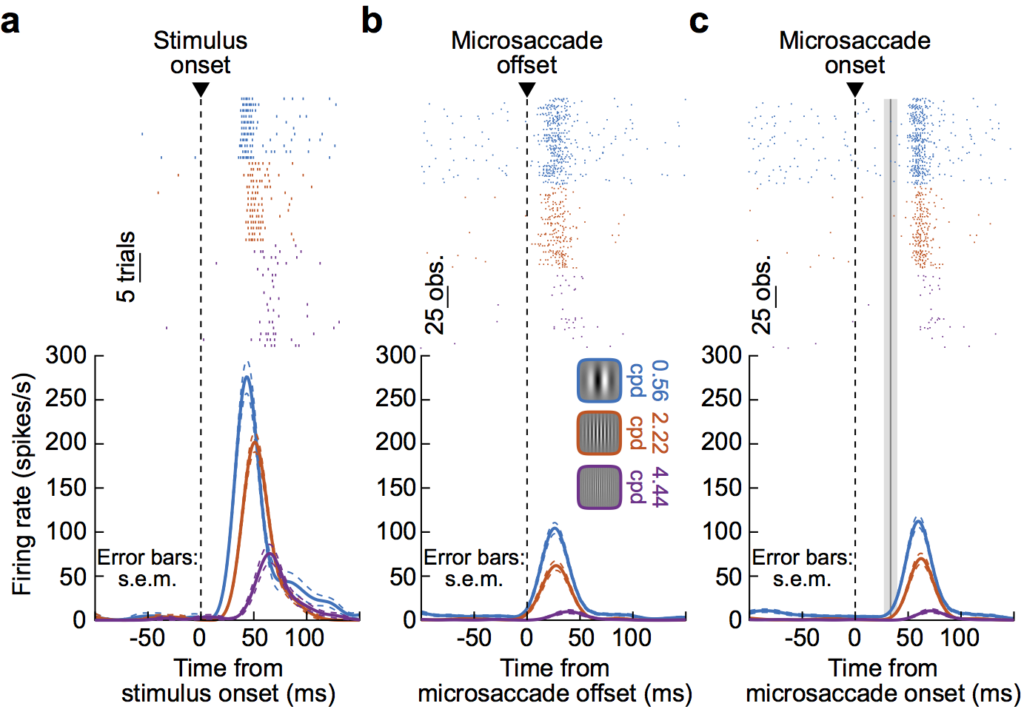 We have a new paper published in the Journal of Neurophysiology! The paper explores how the superior colliculus (SC) represents visual images as they are moved around on the retina by fixational microsaccades.
We have a new paper published in the Journal of Neurophysiology! The paper explores how the superior colliculus (SC) represents visual images as they are moved around on the retina by fixational microsaccades.
Our previous work has shown that when stimuli suddenly appear around the time of microsaccades and saccades, then SC visual responses representing these stimuli are modulated (e.g. either enhanced or suppressed). However, in real life, it is more likely that visual images are stable in the environment as we move our eyes. Therefore, in this study, we asked how SC visual representations are affected when stable objects in the environment are jittered around on the retinal image when the eye makes tiny saccades.
We found that even in peripheral locations, image shifts caused by tiny microsaccades were “updated” in the SC’s visual representation of input images. This means that the SC has a continuous, real-time representation of the visual world, which gets updated with reafferent neural activity bursts after eye movements, no matter how tiny the eye movements are. Such bursts of activity act as a kind of temporal tag to aid the brain in updating visual representations after eye movements.
An interesting aspect of this work is that we explored whether the feature tuning of neurons is affected by the eye movements. That is, each neuron could prefer a given stimulus pattern, as we had shown earlier (e.g. here and here). We found that after microsaccades, the visual preferences of neurons were generally the same. That is, the updating of visual information after the microsaccades was generally faithful to the original image. However, in some cases, this faithfulness was violated.
When we analyzed the reasons for the violations, we found that the SC was actually sensitive to the intra-movement pattern of luminance changes that neurons experienced. For example, if the eye movement moved a vertical grating up and down, then the retinal region being part of the grating did not experience much luminance modulation since the image motion was parallel to the luminance edge of the grating. Therefore, no matter what the preference of an SC neuron was, the reafferent activity burst was weak. On the other hand, if the eye moved the grating horizontally, then the neurons experienced luminance modulation, and therefore had enhanced reafferent activity bursts. This means that the SC is even sensitive to intra-movement image modulations that happen in the retina as a result of eye movements! These results are consistent with our recent observations that the SC may be viewed as much as an early visual area as much as it can be viewed as a late motor control structure for driving eye movements.
The full paper can be read here.

